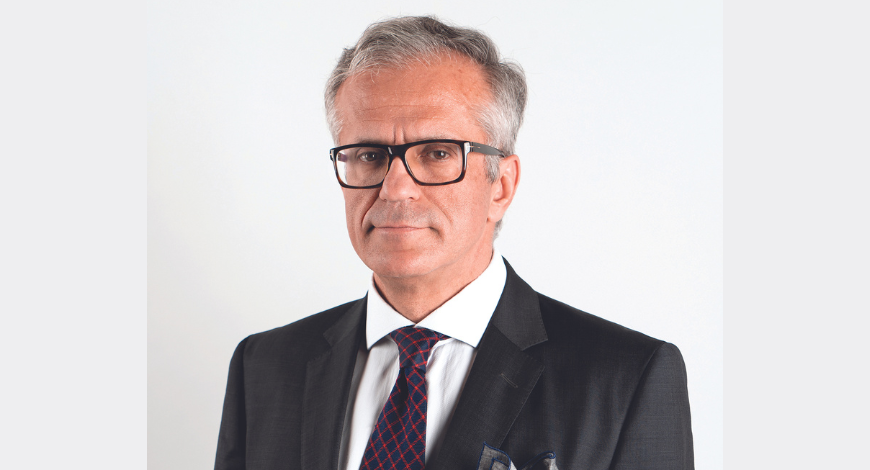- Economy
- Education And Career
- Companies & Markets
- Gadgets & Technology
- After Hours
- Healthcare
- Banking & Finance
- Entrepreneurship
- Energy & Infra
- Case Study
- Video
- More
- Sustainability
- Web Exclusive
- Opinion
- Luxury
- Legal
- Property Review
- Cloud
- Blockchain
- Workplace
- Collaboration
- Developer
- Digital India
- Infrastructure
- Work Life Balance
- Test category by sumit
- Sports
- National
- World
- Entertainment
- Lifestyle
- Science
- Health
- Tech
“The Indian Luxury Market is Heavily Driven by Gifting and Self-Consumption”
Fernando Gallego Cruz, Global Sales Director of Lladró SA, in an exclusive conversation with BW Businessworld, speaks about the brand, the luxury market and the trends we will see over the next few years
Photo Credit :

How has the luxury market changed over the last few years?
The luxury market has evolved immensely over the last few years. Sustainability and luxury were considered oxymorons, but with the ever evolving market, there has been more discussion on being socially and environmentally responsible. The market has seen growth in Asia with increased consumption of luxury. Brands have also started studying local markets and offering creations inspired by different cultures of the world. At Lladró, for example, the new introductions for 2022 saw a new creation of High Porcelain Lord Shrinathji, a limited edition series of 499 units in the world. In the digital age, it has become essential to have the strategy of omnichannel. While offline boutiques offer a physical experience of touch and feel, digital presence is equally important for visibility, awareness and ease of purchase from the comfort of wherever the person is in the world.
For your products, what difference have you found between the Indian luxury market and the European market?
The Indian and European luxury markets for Lladró are very different. The Indian luxury market is heavily driven by gifting and self-consumption.
On the other hand, the European market is driven by tourism. There is no better place in the world than Europe to shop luxury. Pre pandemic, Europe was the most visited continent by Asians and people from the Middle East, who drive maximum sales in the European market.
What are some of the trends we can see in the luxury market in the next few years?
Millennials will be dominant buyers of luxury. They are value based shoppers, true to their identity and beliefs. They expect their loyalty to be earned and invest in experiences. From the past generations, they have also learnt to value authenticity, and are spoilt for choice and therefore, crave innovation. Being conscious customers, they value brands that are sustainable and socially responsible. Being the highest consumers of digital media, their purchases are influenced by online interactions. As they are hybrid shoppers, engaging through different online and offline channels, there will be a need to offer a seamless shopping experience to customers and an even a more personalised one.
How did your organisation fare over the last few years with the pandemic?
The pandemic came with its own challenges affecting retail business as there were multiple lockdowns and safety rules of social distancing had to be followed. This led to lower footfalls at offline boutiques and higher footfalls at the online boutiques. Spending all that time at home also created the need to redecorate their homes, which worked for our brand. As tourism in Europe declined due to travel restrictions, domestic consumption in the Asian subcontinent increased giving a rise to growth in sales. Religious beliefs became stronger in tough times and that lead to the growth of the spiritual market. The period saw rise in demand for the Indian deity sculptures contributing to 37 per cent of the business of India in the pandemic.
Sustaining our customer relationships worked. We constantly stayed connected with our database and successfully serviced their requirements. Payments were taken through online payment gateways and products were delivered safely through our logistics partner. Product catalogues and videos were shared with customers through WhatsApp. Video calls also played a major role to show them products to finalise their selection. With the restriction to host physical events, we organised live streaming events for interior designers, dealers and customers launching our new introductions for the season.
Luxury and e-commerce - does the combination work?
Millennials becoming the dominant consumers of luxury and maximum consumers of digital media, the combination definitely works, but it’s also subjective to different product categories. For Lladró, being in the home décor segment, a hybrid model is the way forward. Digital media offers visibility and awareness and offline boutiques offer experience to touch and feel the different finishes and colours.
How do you keep your consumers engaged?
Marketing strategies like influencer marketing, experiential events and curating targeted content for the Indian market have been adopted. With our social media platforms, we convert the customer’s world into an art gallery. Our latest launches, and collaborations videos are regularly updated on Instagram, Facebook, Linkedin. We also have the Lladró magazine, which goes out monthly to our database.
While focusing on the newer audience, the brand is invested in retaining its loyal customer base of generations. For instance, with the growing luxury spiritual market of India, the brand launched a limited edition High Porcelain sculpture of Lord Shrinathji at the boutique Palladium Mumbai. The sculpture was loved by the residents of the city and even attracted new customers.
New launches are communicated through newsletters and personalised WhatsApp messages. Catalogues play a big role in our business of home décor. We regularly share our seasonal catalogues with our customers. They are either hand delivered or shared digitally. Further, we participate in trade fairs like Maison D’Objet in Paris and Design ID in India.
